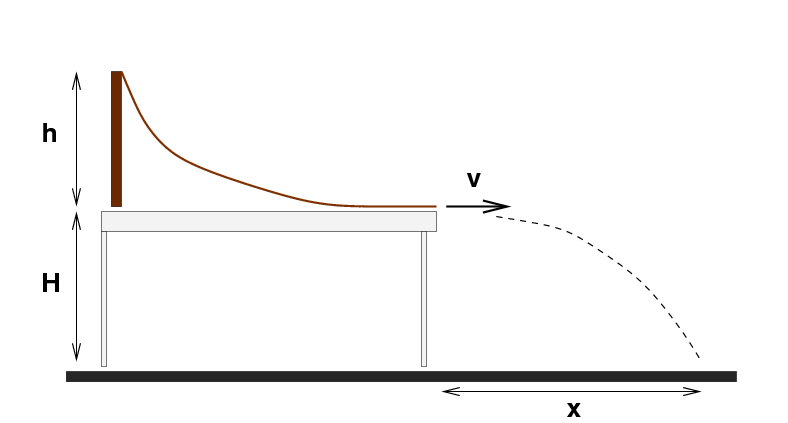
 Copyright © Michael Richmond.
This work is licensed under a Creative Commons License.
Copyright © Michael Richmond.
This work is licensed under a Creative Commons License.

Let's build our own very small roller coaster here in the classroom. I'll set up a tower of height h above the tabletop. A car of mass m will roll down the track from the tower to the edge of the table, then fly outwards with some initial horizontal velocity v. As it falls a distance H to the floor, the car will cover a horizontal distance x.
First, compute some quantities in general: use symbols only, no numbers.
Now, I'll give you the quantities for the actual equipment in our example; that is, the height h, etc.
At this point, we will run several trials to measure the actual distance the car flies after running down the track. I'll write down the results on the board for everyone to see.
If we have time ...
 Copyright © Michael Richmond.
This work is licensed under a Creative Commons License.
Copyright © Michael Richmond.
This work is licensed under a Creative Commons License.